A new architecture of the Franklin University aims to share knowledge, experience and expertise, reinterpreting the boundaries between learning and community. Designed by Italian studio Flaviano Capriotti Architetti, the new campus reflects the holistic approach of the university institution.
Sorengo (Lugano), Switzerland – Unveiled the design for the new campus at Franklin University Switzerland (FUS), Lugano, due for completion in spring 2022. An architecture, designed by Italian studio Flaviano Capriotti Architetti, that aims to share knowledge, experience and expertise: a space where students and the wider community can come together.
Franklin’s holistic approach to learning can be seen in the permeable architecture that is open to the urban context: acting as an evocative and distinctive new landmark and providing the community with public spaces. The facade of the building is a tribute to that quintessential symbol of knowledge: the book.
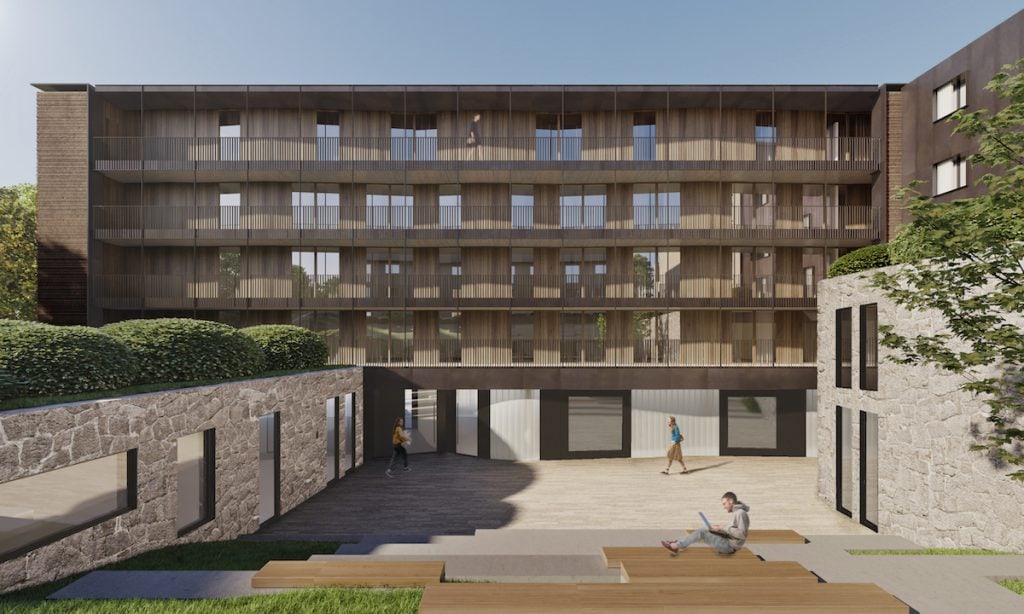
The building is characterised by two distinct architectonic blocks which are linked by their different perspectives, with one being a communal and educational space and one designed for university accommodation. The public-use building stands out for its permeable architecture and, almost as if to assert the purpose of the building, semi-transparent surfaces hint at the interiors within and invite students and the wider community to discover and interact. A glowing light in the auditorium indicates activity within to the outside, turning the building into a dynamic space that speaks to the surrounding urban setting.
Designed as a shared space with communal functions, it stands like a beacon of light within the overall complex. With an orientable system of white photovoltaic plates, the Franklin campus building features the first photovoltaic system in Europe to be fitted with components that follow the orientation of the sun. This mechanism makes the building more sustainable from an environmental point of view and simultaneously provides shading within the spaces, for greater thermal and visual comfort.
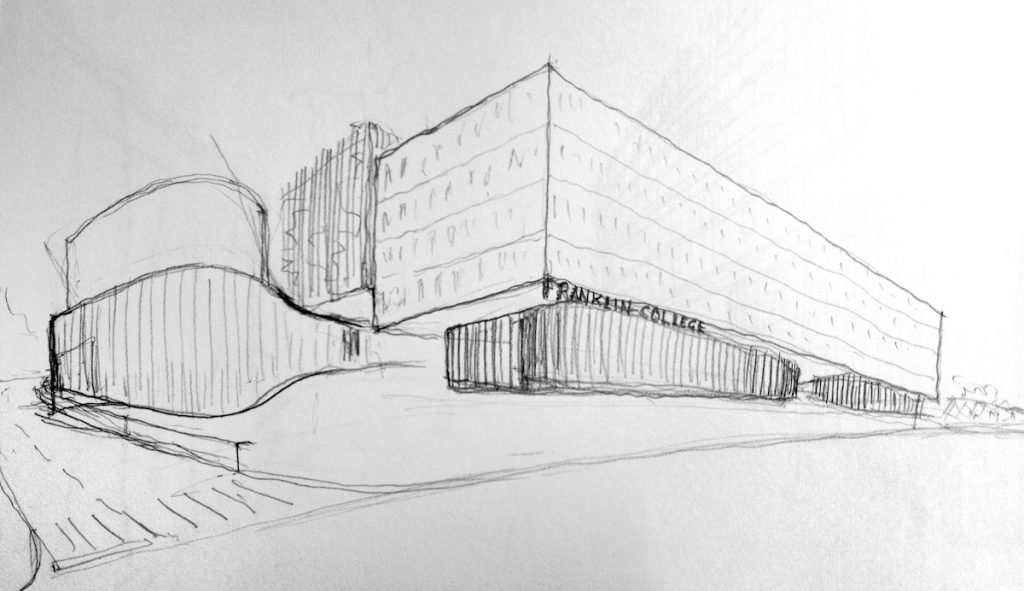
The university accommodation section rests on the main block. Its pigmented and patterned concrete surfaces evoke the colour and texture of the surrounding alpine landscape and at the same time guarantee greater privacy.
The finishing touch of the design is the campus gardens. Created by Hortensia Garden Design, they offer students and professors a communal space to enjoy the benefits of being able to bathe in nature. The gardens are inspired by the Lugano landscapes and their terraced slopes feature Mediterranean plants that have been naturalised thanks to the mild climate of the lake and carefully chosen for their seasonal characteristics.
In a bid to continually grow and increase student numbers, the University decided to extend one of its accommodation buildings, “Campus 3”, and has commissioned Milanese studio Flaviano Capriotti Architetti for the project. The new section will cover a range of functions, including 30 residential units, educational spaces, offices, a fitness area and underground parking.
As a cradle of knowledge and a temple of learning, Franklin University Switzerland offers interdisciplinary and experiential learning, with the academic journey at the centre of its curriculum. As well as pedagogy, this journey also involves experiential activity and the sharing of the everyday. As such, the campus areas and student accommodation are designed to encourage continuous development and professional but also human and personal growth, which is promoted through the act of sharing, exchange and debate.
The architectual design
Tied in with the surrounding landscape, the Ticino Alps and Lake Lugano, the new student residence contains a number of different functions, resulting in independent but interconnected spaces.
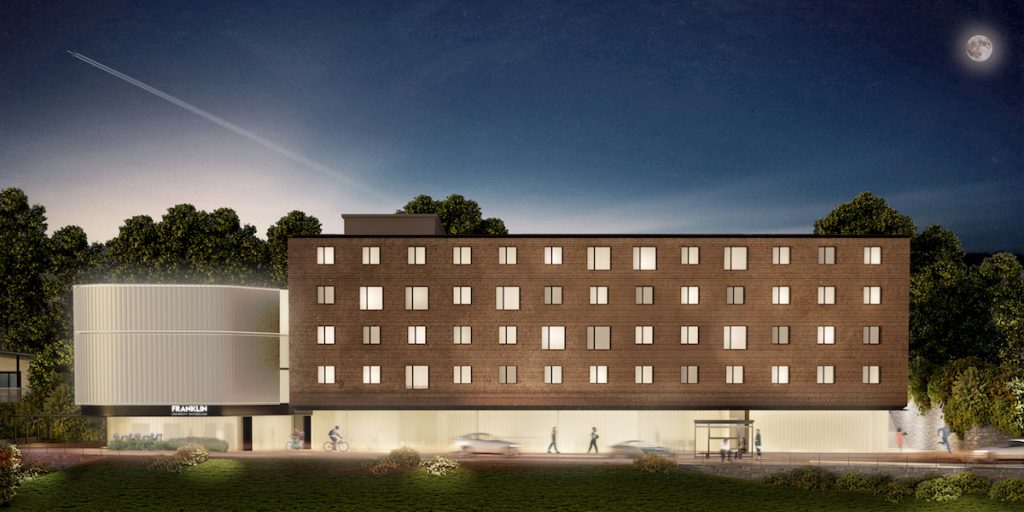
Areas open to the public are on street level and include a library, piazza, auditorium and raised fitness area, while student accommodation is on the upper floors.
The public space is a light building with a characteristic curvy and organic shape. Within this can be found study rooms, a social space for students, a number of didactic offices and a multi-functional hall. Built using glazed, semi-transparent U-glass, its all-embracing inclusive nature announces the desire to become a reference point for the community and a meeting point for the wider town, not just an educational institution. Supporting the residential building, it extends seamlessly towards the centre of the plot of land, where the main elevation then rises up majestically like a great beacon within the multifunctional space. A semi-public open-air space has been created here that acts as a piazza for interacting and exchanging ideas, in close connection with the functions surrounding it, and a central meeting hub that has also been designed to host events and exhibitions.
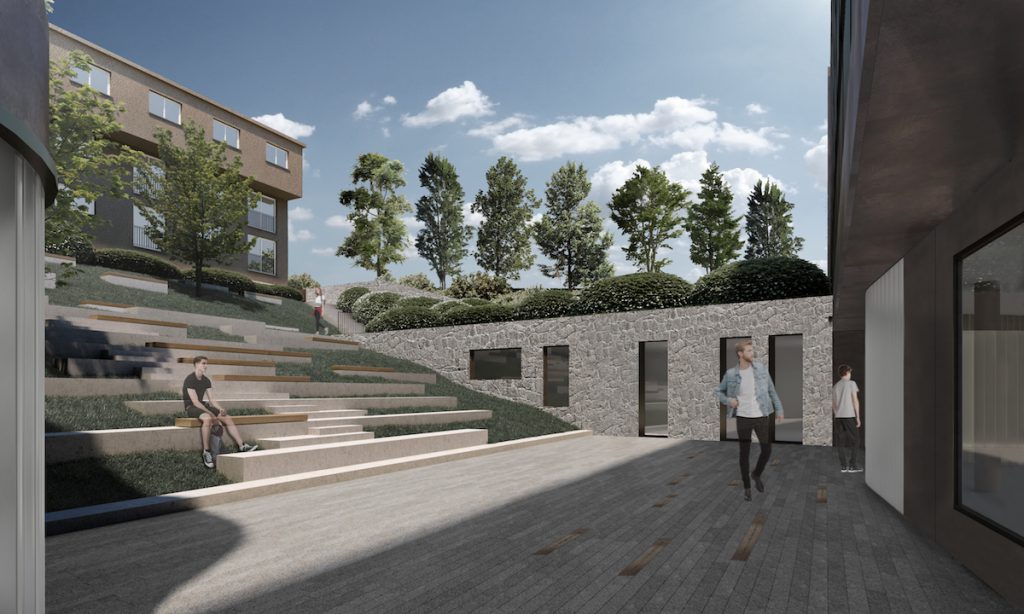
The student accommodation building is a large four-storey structure in patterned and pigmented concrete. Private and withdrawn, it sits harmoniously within the urban context, creating a solid facade onto the street. This is dotted with identical windows that occasionally differ in size but are arranged in a precise, grid-like manner. A linear and continuous pattern evokes the layers of the pages in a book. An emblem of culture and communication, the book symbolically impacts the surrounding alpine landscape and reinterprets this onto the facade of the university building. The student residence is connected to the previous structure built on the area and forms the original C-shaped court, with open walkways overlooking a private internal garden.
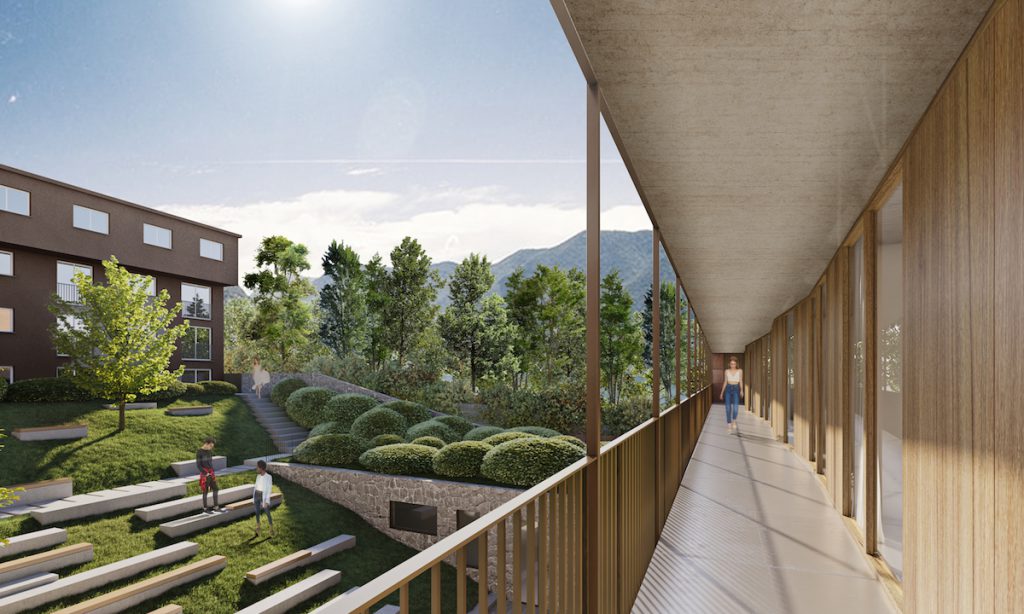
An open set of steps cuts lengthways across the area connecting Via Ponte Tresa and the historic Via San Grato and alongside the green courtyard, while two levels of underground parking complete the design.
Facts and figures
Architectural design: Flaviano Capriotti Architetti
Project management and local architect: Afry Switzerland LTD
Lighting design: Afry Switzerland LTD
Building physics: Ifec
Fire safety design: Tea engineering
Climate control and plumbing: Zocchetti sa
Electrical design: Solcà
Structure design: Casanova
Survey Riccardo: Calastri s
Geologist: Dr. Gianni Togliani
Landscape design: Hortensia
Photovoltaics: Supsi [the University of Applied Sciences and Arts of Southern Switzerland]
Site report: Galli&partners
General architecture contractor: Quadri sa
Construction excavation: Birolini sa
About Franklin University Switzerland
Franklin University Switzerland (FUS) is a university institution that is accredited in Switzerland and in the United States. Since 1969 it has offered degree courses taught in English and allowed students from all over the world to study in an international yet familiar setting in the unique, central European location of Ticino. Situated in Sorengo, Lugano, the university runs Bachelor’s and Master’s degrees as well as summer university courses and other special programmes such as Gap and Foundation Years. With its US-inspired educational approach, FUS focuses on humanities and encourages students to apply critical skills and develop intercultural awareness, thereby also preparing them to become brilliant and responsible professionals and citizens in an increasingly complex world.
About Flaviano Capriotti Architetti
Flaviano Capriotti Architetti is a multidisciplinary design studio in the field of architecture, interior design and product design. The studio is based in Milan. Flaviano Capriotti, a graduate of Architecture at the Politecnico di Milano is a member of the Order of Architects of Milan, he is active in luxury residential, and hospitality design since 1998. He is awarded with the XVIII Compasso D’Oro Young Design Prize in 1998 with the project “Lo Spazzino” developed with Kartell. He has developed, in collaboration with and for Citterio Viel and Partners, the projects of the BVLGARI Hotels & Resorts, the Rivea – Alain Ducasse restaurant in London, the Il Ristorante – Niko Romito in Milan and the W Hotel in St. Petersburg, Russia. He designed the Mio Lab and the two Michelin stars restaurant VUN Andrea Aprea, for the Park Hyatt hotel in Milan. There are ongoing projects such as Franklin University, the bar bistrot and restaurant of the Museo Etrusco at Fondazione Rovati in Milan and luxury residential projects in Italy and abroad.

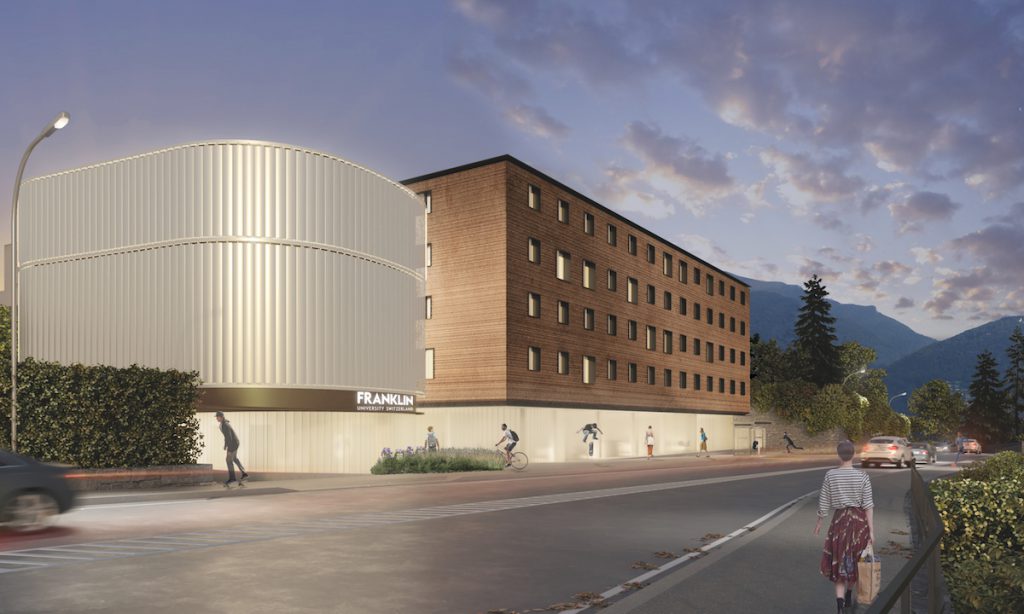
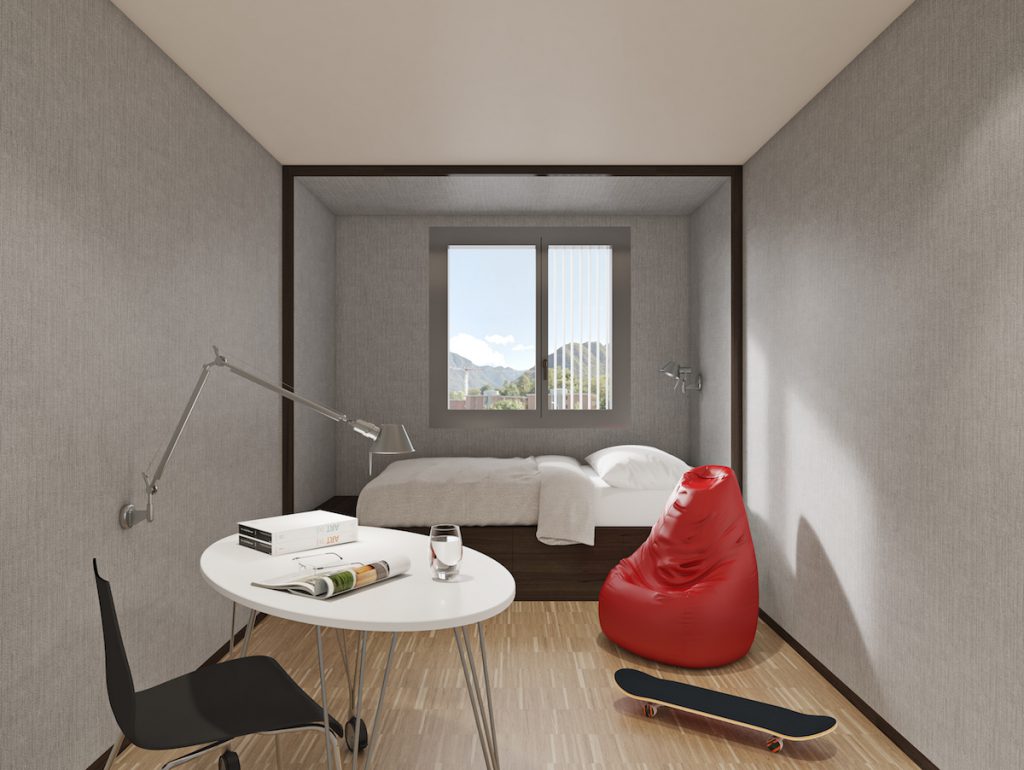
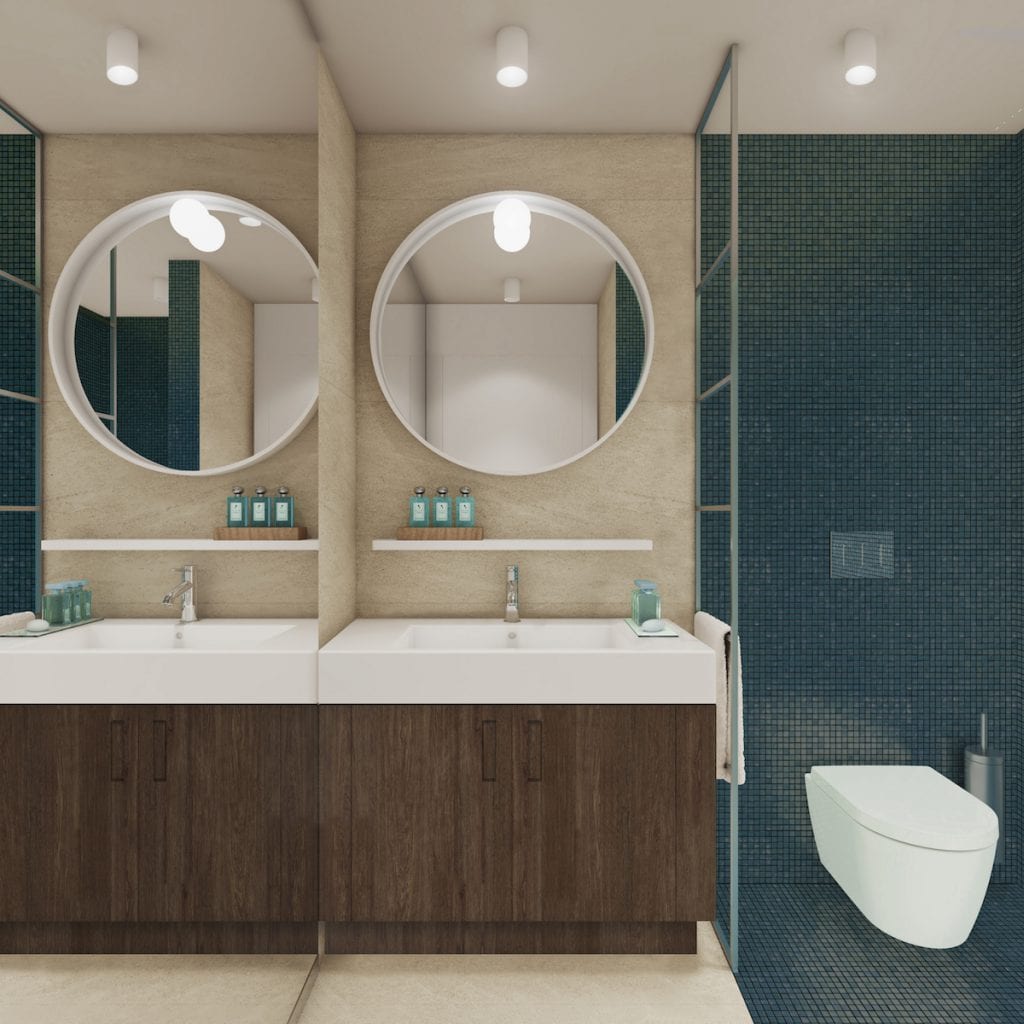
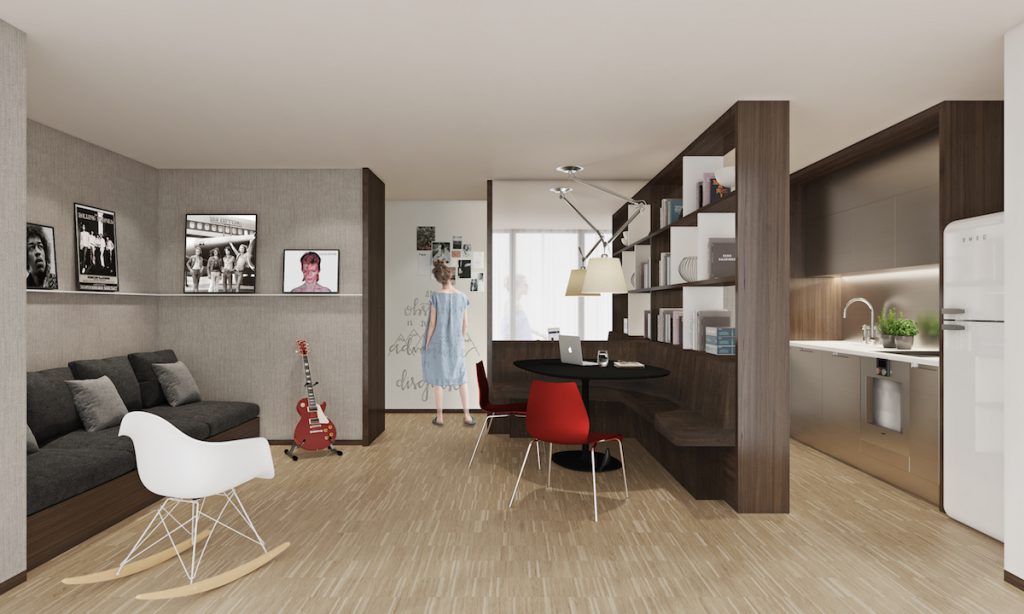
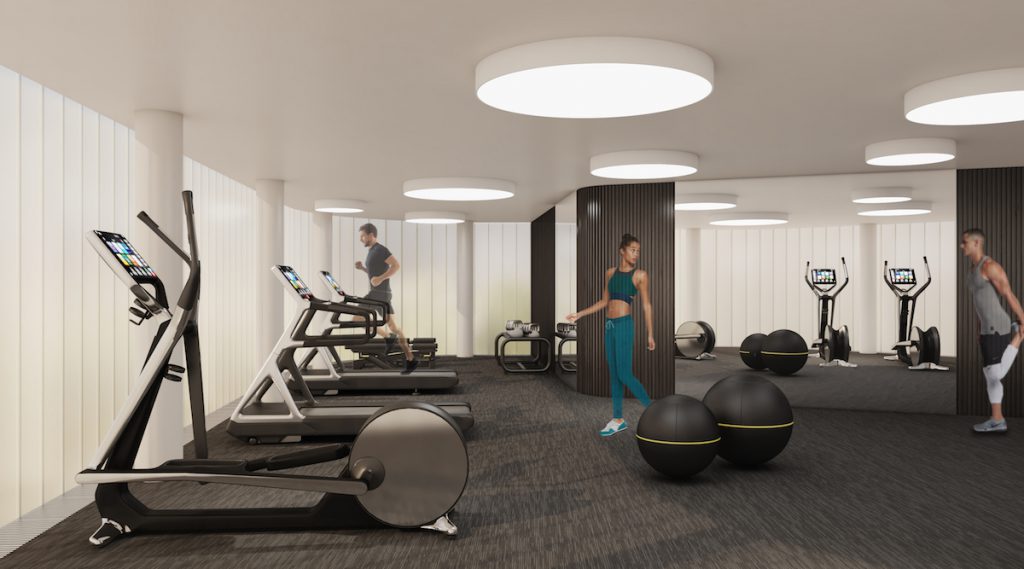
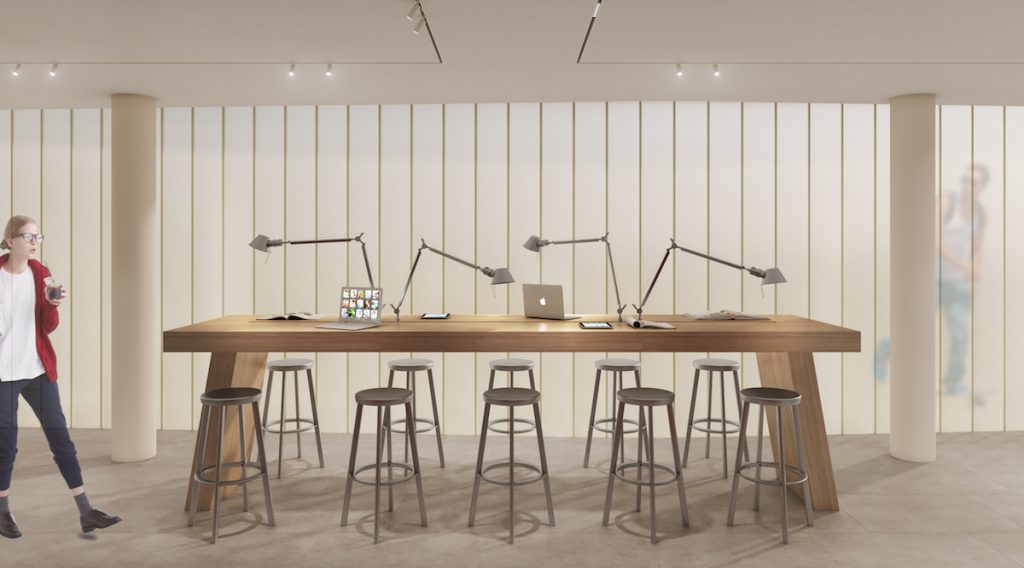
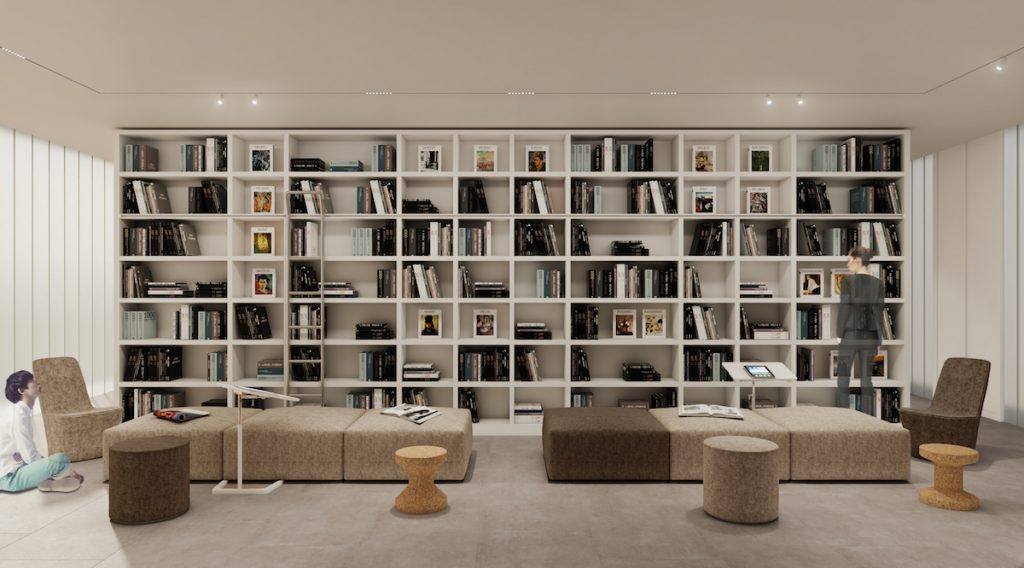
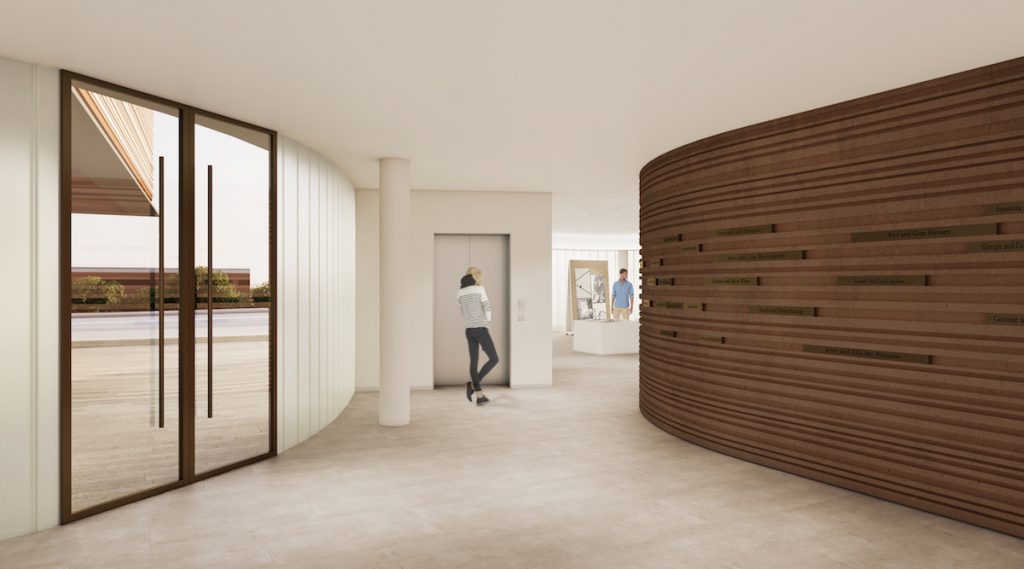
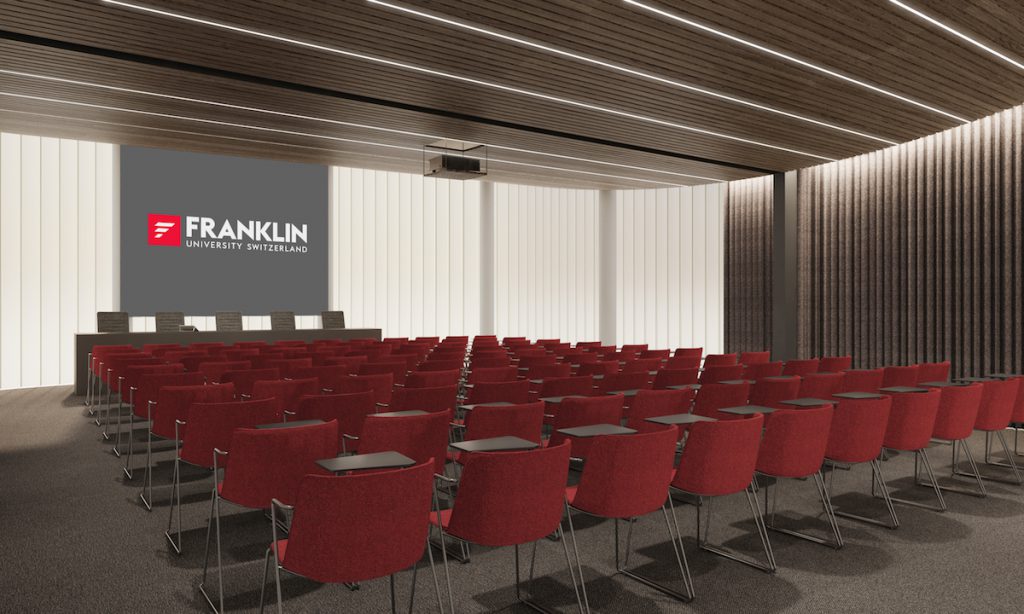
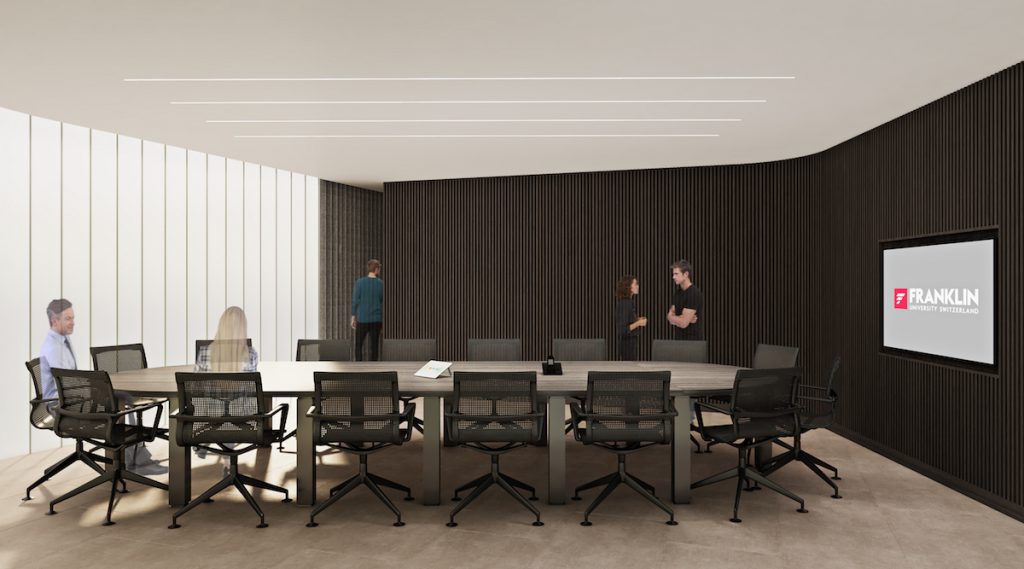
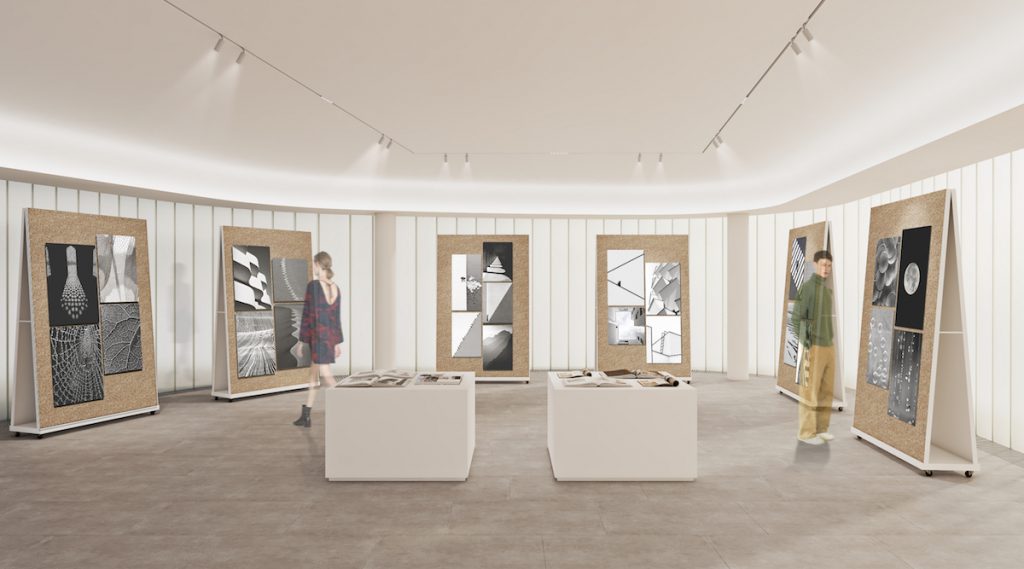
iThere are no comments
Add yours